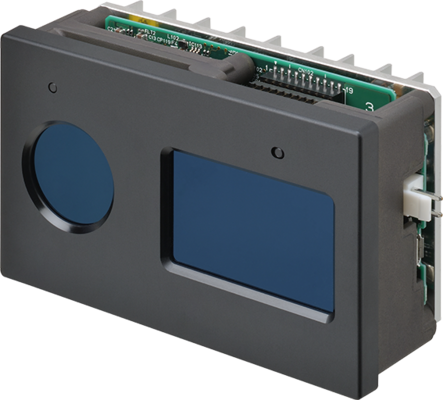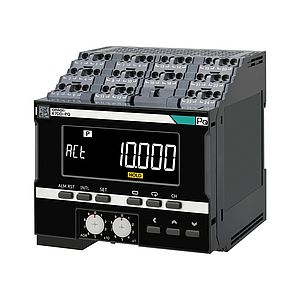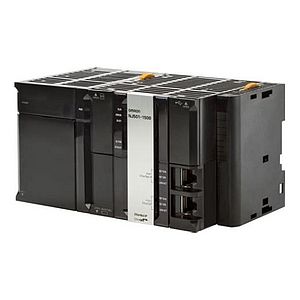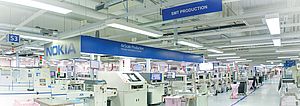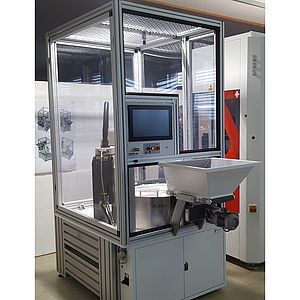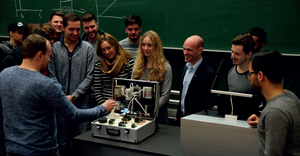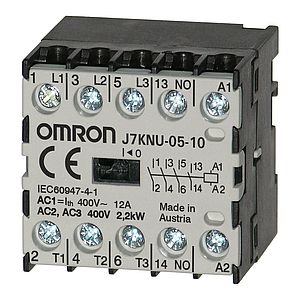From assembly of circuit boards to healthcare applications, the ability for cobots to co-exist safely with humans on the same fenceless factory floor is transforming the way we think about production and its possibilities for customization.
This flexibility, allied with their many other benefits, has led to their rapid adoption - with the market for cobots estimated at USD 0.95 billion in 2023, this is expected to reach USD 2.41 billion by 2028, growing at a CAGR of 20.50% during the forecast period 2023-2028. To work successfully with human workers on shared tasks, safety must be paramount to ensure humans are not injured by their robotic coworkers or produce conditions that could be hazardous to people. These can include proximity sensors for collision detection, force/torque sensors, speed monitoring to ensure the cobot does not move at a speed that could harm humans, as well as object detection systems.
The latter are particularly important, as accurate object detection that can put the cobot’s effectors in the correct place with high precision is vital to maintaining safe operation. It is also essential in the handling of goods, particularly packages that could leak hazardous substances if damaged. Accurate detection is also required to ensure that the cobot can recognize the presence of human workers and adjust its motions to account for them.
Options for object detection
The two major sensing technologies for detecting objects and humans in an environment are ultrasonic and optical based systems. Ultrasonics, although useful in some applications, have several drawbacks, namely a limited range and accuracy that is affected by soft materials.
Optical based systems are often based on LiDAR – Light Detection And Ranging or Laser Detection And Ranging. This can come in two forms, either 2D or 3D. 2D LiDAR suffers from the drawback that, because it uses only a single beam of light bounced off a single surface, it can miss certain objects that are out of the scannable area of the laser beam.
For example, it can miss boxes or other items on the floor as well as possible hazards such as steps. This can be problematical if the robot is mounted on an Automated Guided Vehicle (AGV) and needs to negotiate across an area while avoiding obstacles.
By contrast, 3D LiDAR offers a greater detection envelope, using multiple beams of light simultaneously to create a 3D image of the surrounding area. One of the major drawbacks of 3D LiDAR is its high cost.
An alternative optical method that overcomes many of these drawbacks is the time-of-flight camera (ToF camera), also known as a time-offlight sensor (ToF sensor). This is a range imaging camera system that measures the distance to each point of the image based on time-offlight, the round trip time of an artificial light signal. As scannerless systems, ToF devices capture the entire scene with a single pulse of light from a laser or an LED.
The system is very compact, with the illuminating light or laser placed close to the lens. This compares with stereo vision systems that need a certain minimum base line. Another advantage compared to scanning systems is that no mechanical moving parts are required.
Computing power needed is also minimized, with only simple algorithms required to extract the distance information from the output signals of the ToF sensor – with stereo vision, complex correlation algorithms are implemented.
ToF cameras can measure the distances within a complete scene with a single shot, turning captured images into 3D images. With speeds of up to 20 frames per second, they are ideally suited for use in real-time applications and tracking the movements of objects in three dimensions.
ToF sensors also win against 2D and 3D cameras in situations of poor illumination, or when there are issues with the colours for example - 3D cameras can find it difficult to distinguish objects if the colours are very similar.
An example is a white coloured object on a white background. In this case, using a conventional camera, the edges and the shape of the object are difficult to identify.
By contrast, because it works on time of flight, the ToF sensor is not affected by light and can also work very well in strong direct sunlight. Overall, compared to 3D sensors, ToF sensors offer a good balance between performance and cost.
High precision ToF sensor
Omron offers all these advantages, as well as several others, in its B5L ToF sensor, which offers real-time 3D sensing of the distance to humans or objects with a resolution of 320x240 pixel. The Omron B5L offers an ambient light immunity equivalent to 100,000 lux. This powerful ambient light immunity ensures a stable detection performance that is free from saturation even in bright environments. Designed for a measurement distance of between 0.5 and 4m, the B5L has a detection resolution of 0.3 degrees and a detection accuracy of +/-2%, equivalent to 4cm or less at 2m from the object, with a repeating accuracy of only 1%. The device also outputs compensated signals to minimize the need for processing by the robot’s computer.
A long life of five years is ensured thanks to OMRON’s proprietary circuit design, the product’s heat emission design and the adoption of LEDs for the emission elements.
Omron’s optical design technology also contributes to the accuracy and quality of the image detection and distance measuring. The lens used is designed to correspond to the wavelength of the emitter LEDs, while the arrangement of emitters and receivers minimizes the effect of suspended particles of dust. The B5L also incorporates interference prevention. This allows up to 17 B5L units to be used simultaneously, ideal for when multiple robots are making use of the device for distance measurement.
Another Omron development that can be used with the B5L is skeleton detection software. Based on defined points on the human body, output data from the B5L is used to estimate the pose adopted by the human in question.
Although not a safety function as such, it could be used to detect if the human worker is moving towards the cobot or away from it. In concert with an AI package, cobots could use the skeleton detection function to learn the typical action of the people it works with, contributing to more efficient collaboration by allowing it to optimize the timing and speed of its movements.
ToF sensors in general offer several advantages over standard laser-based 3D sensors and with the technology offered by Omron, the B5L takes the technique to new levels of performance and accuracy.
Fabrizio Petris, Omron Electronic Components Europe B.V.


